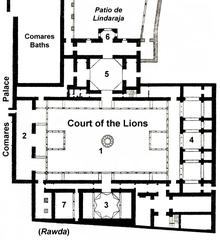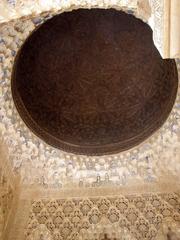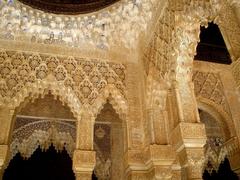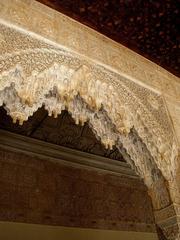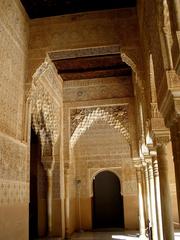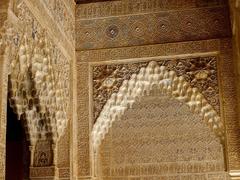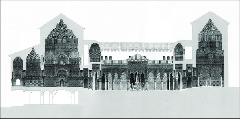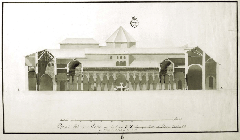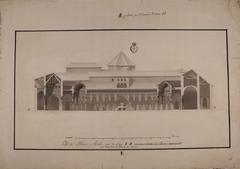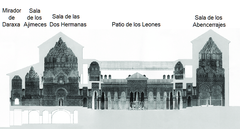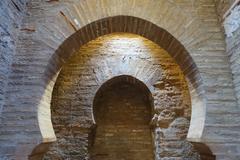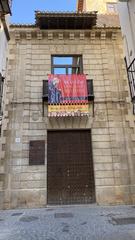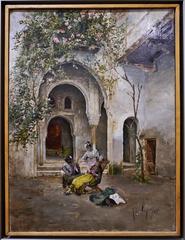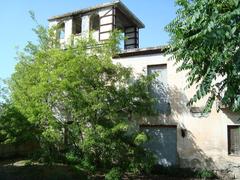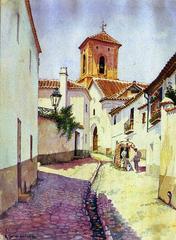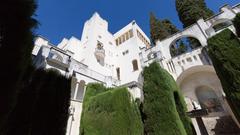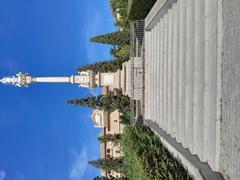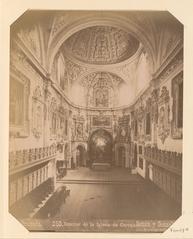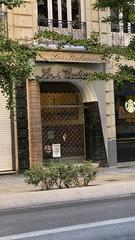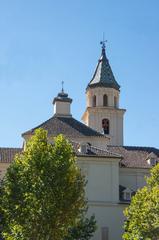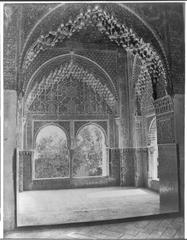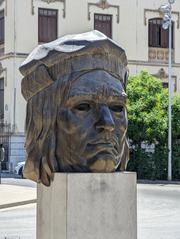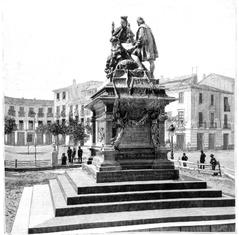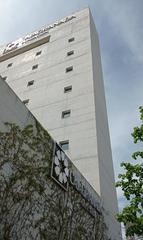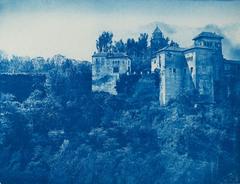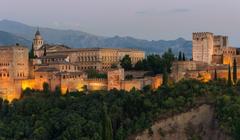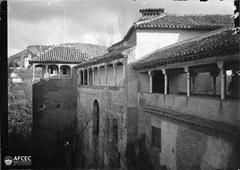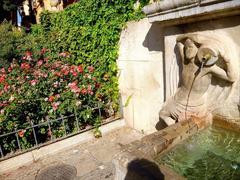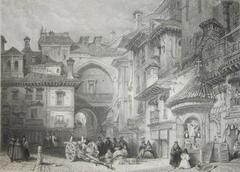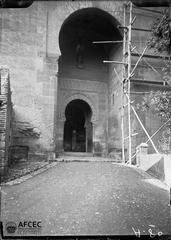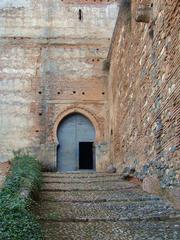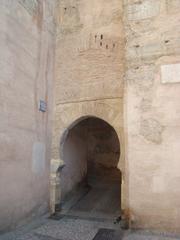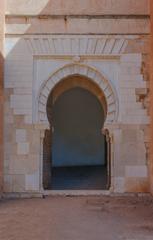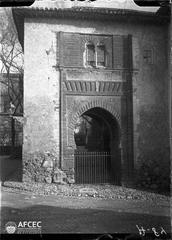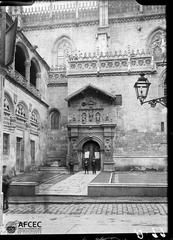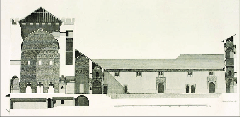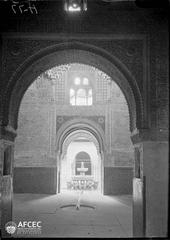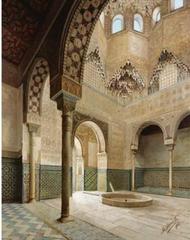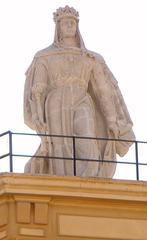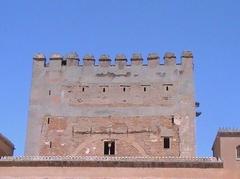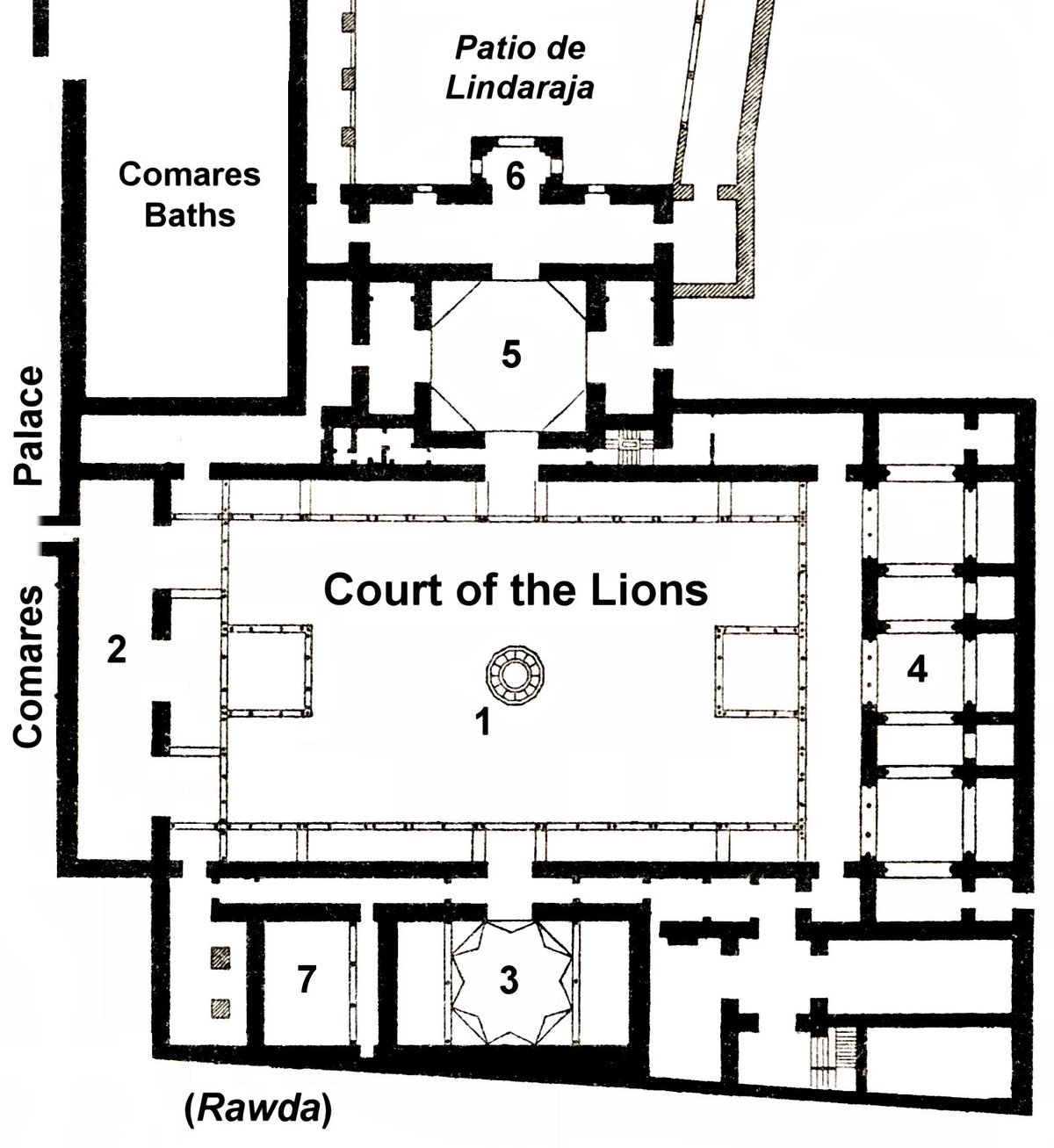
Court of the Lions Visiting Hours, Tickets, and Guide to Granada Historical Sites
Date: 14/06/2025
Introduction to the Court of the Lions and Its Significance in Granada
Nestled within the Alhambra complex in Granada, Spain, the Court of the Lions (Patio de los Leones) is a pinnacle of Nasrid architectural brilliance and Islamic cultural heritage. Built in the late 14th century under Sultan Muhammad V, this courtyard exemplifies the zenith of Nasrid art, harmoniously blending Islamic, Persian, and Andalusian styles. Originally called Riyad al-Sa’id (“Happy Garden”), it served as a private royal retreat and the architectural heart of the Nasrid Palaces (visitgranada.com; history.com; Cicerone Granada).
The Court’s design features a rectangular marble courtyard (about 35 by 20 meters), surrounded by 124 slender white marble columns supporting intricately carved horseshoe arches. At its center is the iconic Fountain of the Lions—an alabaster basin upheld by twelve individually sculpted marble lions, blending Islamic artistic traditions with possible Roman, Jewish, or Christian influences (granadaapie.com; Madain Project). An advanced hydraulic system channels water through four radiating streams, representing the rivers of paradise described in the Qur’an.
Today, the Court of the Lions is not only an architectural marvel but also a vibrant symbol of Granada’s multicultural past. Poets, historians, and writers—including Washington Irving—have drawn inspiration from its beauty. As a UNESCO World Heritage Site since 1984, the Court continues to attract visitors worldwide, serving as a living testament to the region’s historical and artistic legacy (Wikipedia; britannica.com).
To make the most of your visit, it’s vital to understand the site’s seasonal opening hours, secure your tickets in advance, and consider guided tours for historical insight. Accessibility, photography etiquette, and nearby attractions such as the Generalife Gardens and Albaicín neighborhood further enrich the visitor experience (alhambra-patronato.es; thetourguy.com).
Guide Contents
- Introduction to the Court of the Lions and Its Significance
- Historical Context: Origins and Construction
- The Nasrid Dynasty and the Alhambra’s Golden Age
- Architectural and Artistic Highlights
- Visiting Information: Hours, Tickets, Accessibility, and Tips
- Nearby Attractions and Special Events
- Visuals and Virtual Exploration
- Frequently Asked Questions (FAQs)
- Key Historical Facts and Visitor Recommendations
- Sources and Further Reading
Historical Context: Origins and Construction
The Court of the Lions was built around 1377 during Sultan Muhammad V’s reign, representing the apex of the Nasrid dynasty’s artistic and architectural achievements. Designed as a serene royal retreat, the courtyard’s layout incorporates a rectangular space lined with 124 marble columns and a central fountain upheld by twelve marble lions—a rare motif in Islamic art (visitgranada.com; history.com).
The Nasrid Dynasty and the Alhambra’s Golden Age
The Nasrids, Granada’s last Muslim dynasty (1230–1492), transformed the Alhambra from a military fortress into an opulent palace complex. Sultan Muhammad V and his predecessor, Yusuf I, added architectural innovations and cultural refinements, with the Court of the Lions as a focal point of the palatial zone (history.com).
Architectural and Artistic Highlights
- Layout: Measuring roughly 35 x 20 meters, the Court is oriented along cardinal points, its design referencing the four rivers of paradise.
- Columns and Arches: 124 slender white marble columns arranged in clusters support arcades of intricately adorned horseshoe arches and muqarnas vaulting (granadaapie.com).
- Fountain of the Lions: The central alabaster basin sits on twelve unique marble lions. The fountain’s poetic inscription by Ibn Zamrak and its sophisticated hydraulic system symbolize both Nasrid power and paradise (visitgranada.com).
- Symbolism: The lions may represent power, protection, or even allude to the twelve tribes of Israel, reflecting the region’s multicultural influences (Madain Project).
- Surrounding Halls: The Court connects to the Hall of the Abencerrajes, Hall of the Two Sisters, Hall of the Kings, and Hall of the Muqarnas, each richly decorated and historically significant (thetourguy.com).
Visiting the Court of the Lions: Hours, Tickets, Accessibility, and Tips
Visiting Hours
- April–October: 8:30 AM – 8:00 PM
- November–March: 8:30 AM – 6:00 PM Hours may vary on holidays or for special events; consult the official website before your visit.
Tickets and Booking
- General Admission: Includes access to the entire Alhambra complex.
- Guided Tours: Available in multiple languages for in-depth historical context.
- Night Visits: Offer a unique illuminated experience. Tickets often sell out weeks in advance, especially for the Nasrid Palaces and the Court of the Lions. Book online to secure entry (alhambra-patronato.es).
Accessibility
Wheelchair access is available for much of the Alhambra, but some areas have uneven terrain or steps. Visitors with reduced mobility should review accessibility details in advance.
Travel Tips
- Arrive early to enjoy a quieter atmosphere and softer light for photography.
- Wear comfortable shoes and bring water, especially in summer.
- Photography is allowed, but flash and tripods are not permitted inside the palaces.
- Explore nearby sites such as the Generalife Gardens and Albaicín neighborhood.
Nearby Attractions and Special Events
- Generalife Gardens: The Nasrid summer palace with lush, tranquil gardens.
- Albaicín: Moorish quarter with winding streets and breathtaking viewpoints.
- Cultural Events: The Alhambra frequently hosts concerts and festivals in its courtyards; check the official events calendar.
Visuals and Virtual Exploration
View high-resolution images and virtual tours on the Alhambra’s website and trusted travel platforms. Interactive maps and multimedia guides are available to help plan your visit or explore the site virtually.
Frequently Asked Questions (FAQs)
Q: When is the best time to visit?
A: Early morning or late afternoon for fewer crowds and optimal lighting.
Q: Can I buy tickets at the entrance?
A: Not recommended—tickets often sell out. Book online in advance.
Q: Are guided tours necessary?
A: Optional but highly recommended for deeper understanding.
Q: Is photography allowed?
A: Yes, but without flash or tripods.
Q: How do I get to the Alhambra from central Granada?
A: By bus, taxi, or a scenic uphill walk.
Key Historical Facts and Visitor Recommendations
- Construction: Late 14th century (c. 1377) under Sultan Muhammad V.
- Dimensions: Approx. 35 x 20 meters; 124 marble columns.
- Fountain: Central alabaster basin with 12 unique marble lions.
- UNESCO World Heritage Site: Since 1984.
- Restoration: Major work (2002–2012) restored original details.
- Annual Visitors: Approx. 2.7 million.
Visitor Recommendations:
- Book tickets well in advance, especially for high season.
- Consider a guided tour to enrich your experience.
- Respect preservation guidelines—do not touch the artwork or stray from designated paths.
- Explore the broader Alhambra complex for a full appreciation of Granada’s history.
Sources and Further Reading
- VisitGranada – The Courtyard of the Lions
- History.com – The Alhambra
- GranadaApie – Curiosities of the Court of the Lions
- Wikipedia – Court of the Lions
- Britannica – Alhambra Fortress
- Cicerone Granada – Alhambra & Generalife Guide
- Official Alhambra Ticket Office
- TheTourGuy – Brief History of the Alhambra
- Madain Project – Court of the Lions
- Granada Info – Tales of the Alhambra
For up-to-date information on the Court of the Lions and other Granada sites, download the Audiala app and follow us on social media.
